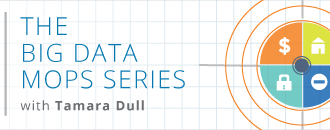 There are lots of sales methodologies in the market. As the makers of award-winning sales pipeline analysis and forecasting application SalesClic, we are familiar with most of them. Here are, distilled in a list of dos and don’ts, their main prescriptions.
There are lots of sales methodologies in the market. As the makers of award-winning sales pipeline analysis and forecasting application SalesClic, we are familiar with most of them. Here are, distilled in a list of dos and don’ts, their main prescriptions.
 There are lots of sales methodologies in the market. As the makers of award-winning sales pipeline analysis and forecasting application SalesClic, we are familiar with most of them. Here are, distilled in a list of dos and don’ts, their main prescriptions.
There are lots of sales methodologies in the market. As the makers of award-winning sales pipeline analysis and forecasting application SalesClic, we are familiar with most of them. Here are, distilled in a list of dos and don’ts, their main prescriptions.
DO | DON’T |
Design and use a proper sales pipeline. A surprising number of companies use their CRM software as an overblown contact manager, but fail to leverage their sales pipeline management potential. Well, pipeline management starts… with a proper pipeline. Formalize your sales process now! It is not that difficult. | Blindly use a sales pipeline template. A standard pipeline is better than none, but your sales process should reflect the buying process of your prospects. This is the key to deriving meaningful analyses and accurate forecasts from your sales pipeline. This article provides useful tips for finding the right pipeline stages. |
Monitor sales pipeline activity. There are two types of CRM data quality. The “administrative” type (e.g. proper telephone numbers, correct salutations) and the “economic” type (data that means something from a business perspective). Monitoring pipeline activity helps improve both and increases your visibility on future revenues. | Focus on volume indicators. The relationship between sales activities and sales process outcome is hard to model. Focusing on volume indicators (e.g. number of phone calls) will give you a false sense of security, unless your sales are mostly transactional (i.e. large volumes, short sales cycle). |
Focus your reps on distinct stages of the sales pipeline. B2B companies with an intense sales effort will benefit from distinguishing the early stages (focused on qualification activities) and the late stages of the sales process (focused on traditional enterprise sales activities). They require distinct competencies, and creating separate teams to handle them will increase overall sales effectiveness. | Create sales and marketing silos. You should not understand this call for specialization as an incentive to segregate sales and marketing. On the contrary, measuring sales pipeline dynamics will clarify the impact of marketing decisions on sales and create an incentive for sales and marketing to work together. |
Watch individual opportunities. There is really no escaping this traditional aspect of sales pipeline management. Periodic reviews of the opportunities in the pipeline will help you clarify priorities and plan for the weeks ahead. | Neglect pipeline dynamics because of the time spent watching individual opportunities. Sales reps have a strong loss aversion and will often keep bad opportunities on life support longer than necessary. Assessing individual opportunities in the pipeline’s historical data will help you maximise the return on your “sales portfolio” – often by minimizing the time spent on zombies. |
Relate sales forecasting to sales pipeline management. For most B2B companies, this is the only way to produce meaningful forecasts: their market share is too uncertain for demand forecasting to apply, and their sales volumes are too small for statistical forecasting to work. | Restrict sales forecasting to calculating your weighted pipeline or your coverage ratio. We very much believe that simplicity often trumps sophistication but these traditional B2B forecasting methods are not reliable. If you can’t leverage the historical data in your CRM database for forecasting, it is better not to use them at all. |










